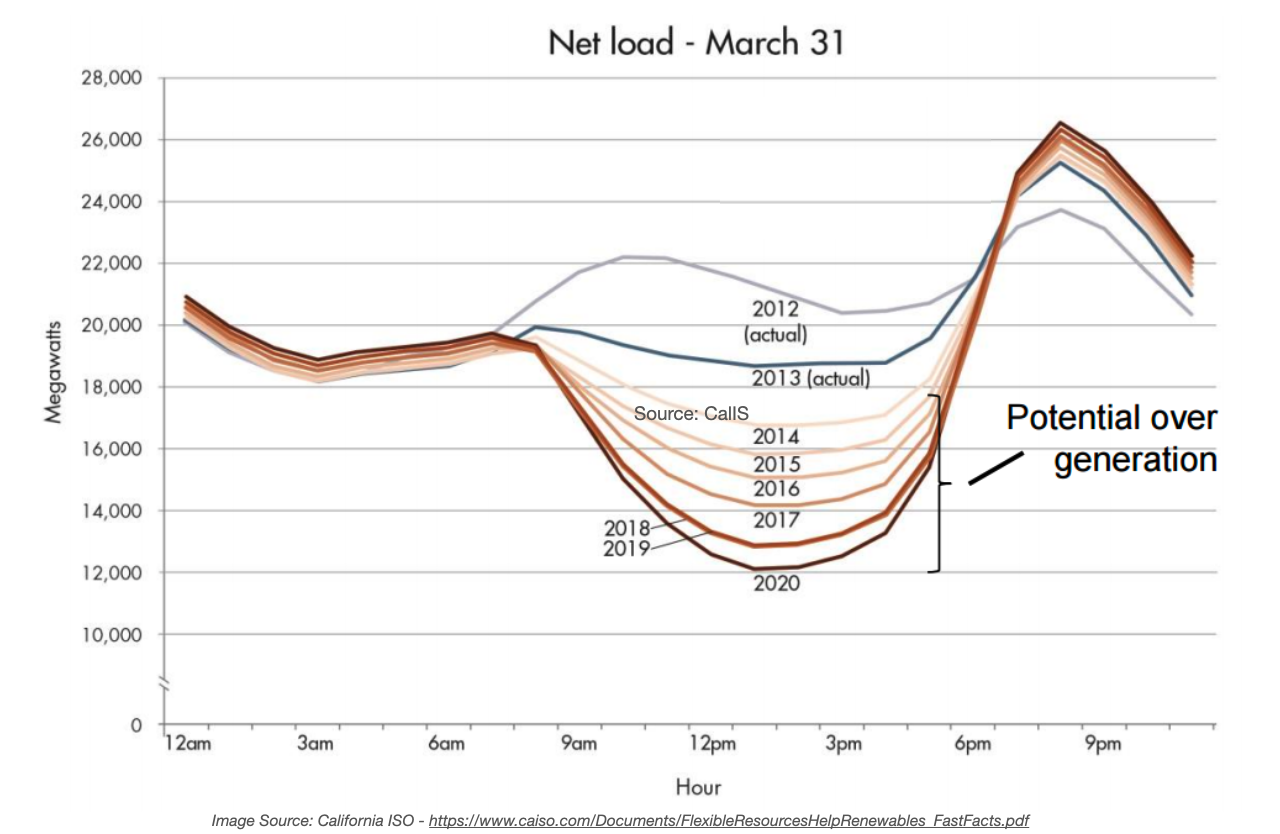Delivering reliable power for consumers to stay comfortable and healthy is core to the missions of most utility companies. No matter the weather, essential workers ensure that the lights stay on and homes keep cool.
But now consumers are increasingly asking utilities to do even more when it comes to renewable energy. With utilities setting 100% clean energy targets across the country, universal scale and on-site solar is becoming more prevalent.
Because the sun shines (nearly) every day, it is the planet’s most abundant energy resource. But, as is the case with all energy sources, taking advantage of solar energy comes with challenges. One of the most significant challenges solar energy faces is aligning supply and demand. In many homes, demand is the lowest in the morning and midday before ramping up in the afternoon. Meanwhile, solar energy production begins in the morning and peaks midday. When energy demand dips in the middle of the day and then climbs as the sun sets for the evening, the result of energy demand for an energy system with increasing solar is known as the “duck curve.”

The use of air-conditioning equipment often leads to the evening energy climb and has historically been targeted by utilities for energy demand management via demand response.
As efforts to better manage cooling demand continue, there is a risk that the increased adoption of electric vehicles (EVs) will continue to keep the afternoon/evening peak high. That risk, however, creates an opportunity to flatten the load profile by shifting the load to other times. In the context of the duck curve, before blindly managing EV charging, utilities should consider when they want EV drivers to charge up and how that might impact other appliances during that time. In other words, in order to flatten the load profile, the peak needs to be reduced, but the trough needs to be increased. Time-of-use rates can help by sending price signals that reflect the cost of energy and energy demand as it fluctuates during the day. And in some cases, utilities have done “reverse demand response” to soak up the sun’s energy, creating a reliable and affordable energy delivery solution.
When considering the increasing number of smart appliances in the home, EV charging might be better suited for later in the evening, assuming energy consumers are out of their homes during the day. In that scenario, air conditioners or electric water heaters may serve as opportunities to shift the load to earlier in the day to fill the duck curve. Air-conditioning equipment can begin pre-cooling to keep the home cool in the afternoon and evening and electric water heaters can ensure water is not only hot enough to make dinner but for any other evening water use as well. In any case, more dynamic consumer engagement is likely needed to align with a more dynamic energy system. While utilities send notifications and price signals, real-time energy data and personalized insights can help bridge the gap of information and support action to create a more flexible load.
By delivering real-time energy insights, Copper helps consumers plan energy consumption for the day, ensuring they don’t bake in the summer heat while they soak up the sun in order to reduce the duck curve’s impact one their system.
Copper’s advanced energy technology platform connects wirelessly to electric, gas and water meters to deliver high-resolution data in real-time, including sub-minute intervals. Built for utility programs and operations, the device enables the development of advanced customer programs and demand management, no matter the state of the grid edge of the utilities. The Copper portal displays live load data with the ability to target messages to consumers based on energy demand, connected distributed energy resources (DERs) and more, empowering utilities and consumers to quickly understand demand reduction results and gain further savings from social norming and behavioral science.